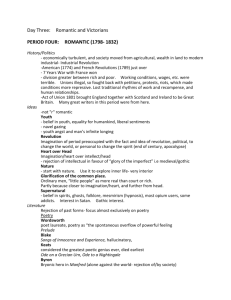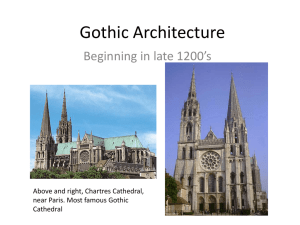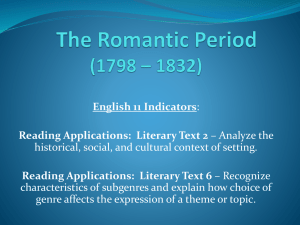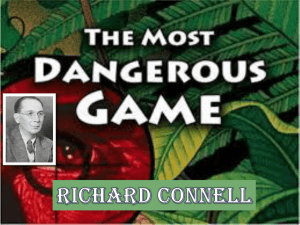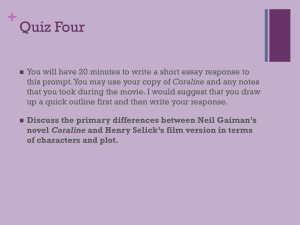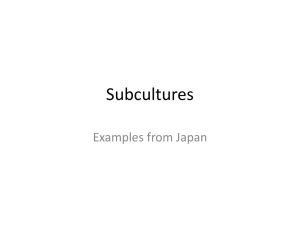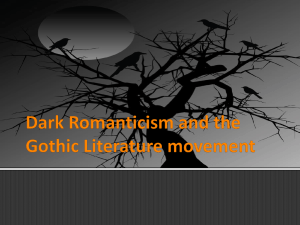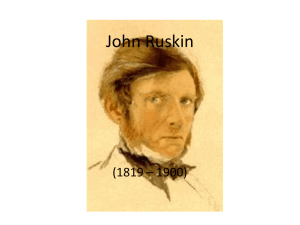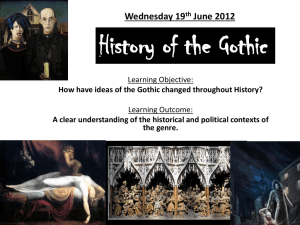19. THE GOTHIC NOVEL
advertisement
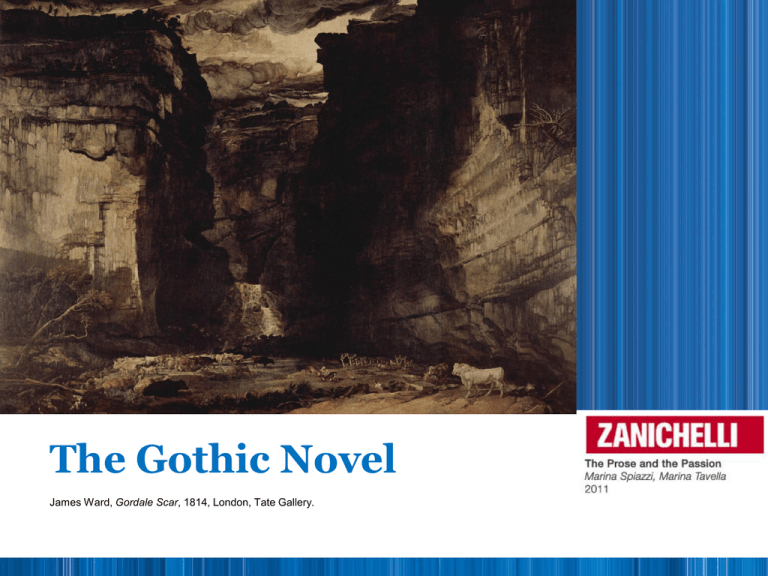
The Gothic Novel James Ward, Gordale Scar, 1814, London, Tate Gallery. The Gothic novel 1. The origin of the name It came to popularity at the end of the 18th century The adjective “Gothic” three connotations Medieval, linked to the architecture of the 12th-14th centuries Irregular, barbarous, opposed to Classicism The Prose and the Passion Wild, supernatural, in the sense of mysterious The Gothic novel 2. Influences Industrial exploitation The 18thcentury society • Destruction of the single human being • Man as a slave to forces he could not control • Gothic symbols as denunciation of social problems The Prose and the Passion The Gothic novel 2. Influences • As a celebration of terror The “sublime” • As a rejection of constraints and limits • As exploration of forbidden areas The Prose and the Passion The Gothic novel 3. The setting • Great importance given to terror, characterised by obscurity and uncertainty, and horror, caused by evil and atrocity. • Darkness necessary ingredient for the mysterious, gloomy atmosphere. Jonathan Barry, Udolpho Castle, 1993, private collection. The Prose and the Passion The Gothic novel 3. The setting • Ancient settings isolated castles and mysterious abbeys with hidden passages, underground cellars, secret rooms. • Catholic countries as the setting for the most terrible crimes, due to Protestant prejudices against Catholicism. A drawing depicting the Gothic staircase at Strawberry Hill, near London. The Prose and the Passion The Gothic novel 4. The characters Characters dominated by exaggerated reactions in front of mysterious situations or events. Supernatural beings vampires, monsters and ghosts. Henry Fuseli (Johann Heinrich Füssli), The Nightmare, 1781, Goethe Museum, Frankfurt The Prose and the Passion The Gothic novel 4. The characters Sensitive heroes they save heroines. Heroines stricken by unreal terrors and persecuted by the villains. Satanic, terrifying male characters, victims of their negative impulses. Henry Fuseli (Johann Heinrich Füssli), The Nightmare, 1781, Goethe Museum, Frankfurt The Prose and the Passion The Gothic novel 5. The language Semantic areas Words Mystery enchantment, ghost, haunted, infernal, magic, secret, spectre, vision Fear/ Terror/ Sorrow agony, anguish, apprehensions, despair, dread, fearing, frightened, hopeless, horror, melancholy, miserable, panic, sadly, scared, shrieks, sorrow, tears, terror, unhappy, wretched Haste anxious, breathless, frantic, hastily, impatient, running, suddenly Anger anger, enraged, furious, rage, resentment, wrath Largeness enormous, gigantic, large, tremendous, vast The Prose and the Passion The Gothic novel 6. First Gothic authors • Horace Walpole The Castle of Otranto (1764) • Ann Radcliffe The Mysteries of Udolpho (1794) • Matthew Lewis The Monk (1796) • Mary Shelley Frankenstein (1818) The Prose and the Passion The Gothic novel 7. Popularity • Great interest during the 18th century common to all strata of society. • The features of Gothic novels preserved in modern and contemporary descendents of this genre in the works of: Charlotte Brontë E. A. Poe R. L. Stevenson Bram Stoker The Prose and the Passion
